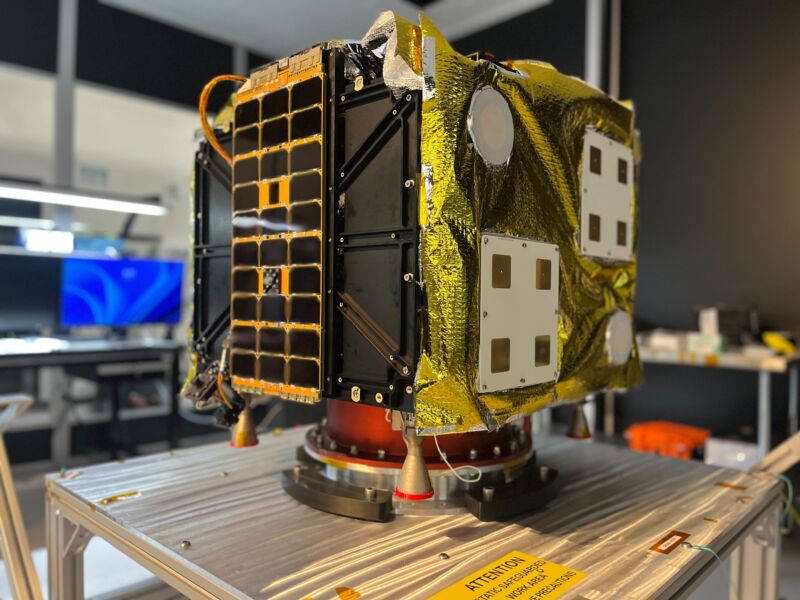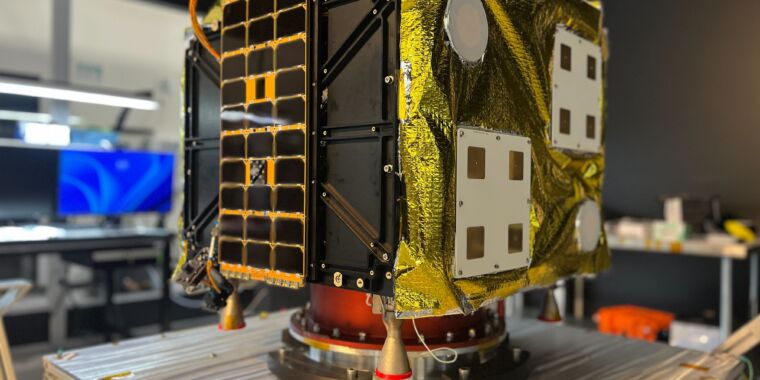
Astro Forge
When I first spoke with space entrepreneurs Jose Acain and Matt Gialich a little more than two years ago, I wondered whether I would ever talk to them again.
That is not meant to be offensive, rather it is a reflection of the fact that the business they entered into—mining asteroids for platinum and other precious metals—is a perilous one. To date NASA and other space agencies have spent billions of dollars returning a few grams of rocky material from asteroids. Humanity has never visited a metal-rich asteroid, although that will finally change with NASA’s $1.4 billion Psyche mission in 2029. And so commercial asteroid mining seems like a stretch, and indeed, other similarly minded startups have come and gone.
But it turns out that I did hear from Acain and Gialich again about their asteroid mining venture, AstroForge. On Tuesday the co-founders announced that they have successfully raised $40 million in Series A funding and shared plans for their next two missions. AstroForge has now raised a total of $55 million to date.
“It was challenging,” Gialich said of the latest fundraising effort, in an interview. “It’s not easy to ever raise for an asteroid mining company, right? Let’s be honest. We talked two years ago and you told us this. And you were not wrong. So a big part of this funding round was just showing people that we can actually build a spacecraft.”
Making some mistakes
In April 2023 the company launched a shoebox-sized cubesat, named the Brokkr-1 mission, on a SpaceX Transporter flight. Although the vehicle flew as intended for a while, AstroForge was unable to send the necessary commands to the spacecraft to initiate a demonstration of its space-based refining technology.
However, Gialich said AstroForge learned a lot from this mission and is working toward launching a second spacecraft named Odin. This will be a rideshare payload on the Intuitive Machines-2 mission, which is due to launch during the fourth quarter of this year. If successful, the Odin mission would be spectacular. About seven months after launching, Odin will attempt to fly by a near-Earth, metallic-rich asteroid while capturing images and taking data—truly visiting terra incognita. Odin would also be the first-ever private mission to fly by a body in the Solar System beyond the Moon.
It has not been an easy project to develop. In the name of expediency, AstroForge initially sought to develop this spacecraft by largely outsourcing key components from suppliers—a practice known as horizontal integration. However, in March, the Odin spacecraft failed vibration testing. “Originally, our concept was to be different than SpaceX, and be horizontally integrated, not vertical,” Gialich said. “That was completely wrong. We have very much made changes there to be vertical.”
After the original vehicle failed vibration testing, which ensures it can survive the rigors of launch, AstroForge decided to bring forward a spacecraft being developed internally for the company’s third flight and use that for the Odin mission. To remain on track for a launch this year, the company had to complete vibration testing of the new, 100-kg Odin vehicle by August 1. AstroForge made that deadline but still must complete several other tests before shipping Odin to the launch pad.
Docking with an asteroid
On Tuesday the company also announced plans for its third mission, Vestri (the company is naming its missions after Norse deities). This spacecraft will be about twice as large as Odin and is intended to return to the targeted metallic asteroid and dock with it. The docking mechanism is simple—since the asteroid is likely to be iron rich, Vestri will use magnets to attach itself.
The plan is to use a mass spectrometer to sample and characterize the asteroid on a weekly basis, until the spacecraft fails. AstroForge seeks to launch Vestri on another Intuitive Machines mission in 2025. Vestri’s goals are highly ambitious, as no private spacecraft has ever landed on a body beyond the Moon.
AstroForge is tracking several candidate asteroids as the target body for Odin and Vestri, Gialich said, each of which is about 400 meters across. He won’t make a final decision for several months. The company does not want to tip its hand due to the interest of potential competitors, including China-based Origin Space.
However, there is no shortage of potential targets. Scientists estimate that there are about 10 million near-Earth asteroids, which come within 1 astronomical unit (the distance between the Sun and Earth) of our planet. Perhaps 3 to 5 percent of these are rich in metals, so there are potentially hundreds of thousands of candidates for mining.

